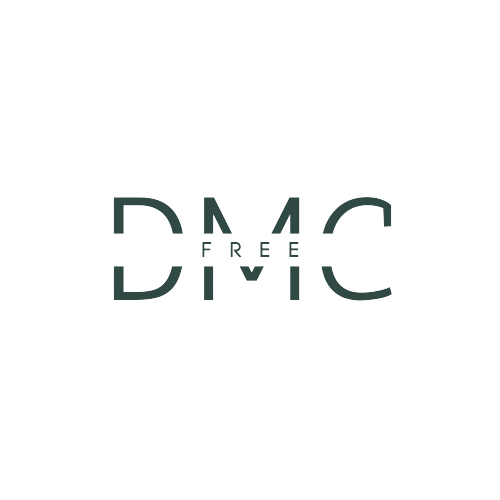
The digital age has revolutionized the way businesses approach product and service design. At the heart of this transformation lies User Experience (UX) – the process of enhancing user satisfaction by creating products that provide relevant experiences. The rising significance of UX has led to an increased demand for trained professionals in this realm. This surge has resulted in a plethora of UX Master’s programs emerging across the globe.
Table of Contents
Why Pursue a UX Master’s Program?
For those wondering about the relevance of UX in today’s market, it’s beneficial to understand how deeply intertwined UX is with aspects of data analytics. For instance, the distinction between Quantitative vs Qualitative Data is crucial in UX. These insights help professionals make informed decisions. Similarly, methods from the Data Analysis Process are routinely employed to interpret user behavior and preferences.
Top 5 Institutes offer Masters in UX design programs
Here’s a representative table:
| Rank | Institute Name | Location | Program Name | Duration | Estimated Tuition Fee (Annual) |
|---|---|---|---|---|---|
| 1 | Carnegie Mellon University | Pittsburgh, PA, USA | Master of Human-Computer Interaction (MHCI) | 1 year | $56,000 |
| 2 | University of Washington | Seattle, WA, USA | Master of Human-Computer Interaction and Design (MHCID) | 1 year | $53,000 |
| 3 | Georgia Institute of Technology | Atlanta, GA, USA | MS in Human-Computer Interaction | 2 years | $32,000 (in-state) $50,000 (out-of-state) |
| 4 | University of California, Irvine | Irvine, CA, USA | Master of Human-Computer Interaction and Design (MHCID) | 2 years | $30,000 (in-state) $42,000 (out-of-state) |
| 5 | University of Maryland | College Park, MD, USA | Master of Science in Human-Computer Interaction (MS-HCI) | 2 years | $29,000 (in-state) $47,000 (out-of-state) |
Salaries Comparison for UX Professionals
To appreciate the value of pursuing a UX master’s, it’s worth examining the potential financial rewards. Here is a comparison table of average UX professional salaries across top countries:
| Country | Average Annual Salary (USD) |
|---|---|
| USA | $85,000 |
| UK | $70,000 |
| Canada | $75,000 |
| Australia | $73,000 |
| Germany | $72,000 |
These figures indicate a promising return on investment for those considering diving deeper into UX.

Choosing the Right Program
When looking for the best UX Master’s program, ensure it offers a comprehensive curriculum. Some of the essential topics to be covered should include:
- Data Analytics: A strong foundation in Data Analytics is crucial for any UX professional. This will enable you to extract meaningful insights from vast amounts of data.
- Big Data: As a UX professional, you’ll encounter Big Data. Understanding its potential and pitfalls, like answering the question, Is Big Data Dangerous?, will be vital.
- Remote Working: The future is moving towards remote working. Ensure that your program covers aspects of being a Remote Data Analyst, as these skills will be invaluable in the post-pandemic world.
Pros and Cons of pursuing a UX Master’s program:
| Pros | Cons |
|---|---|
| Depth of Knowledge: Acquire a comprehensive understanding of the UX domain, beneficial for various industries. | Financial Implications: Master’s programs can be costly, with no guaranteed immediate return on investment. |
| Career Opportunities: Enhance your credentials for elevated positions and broader job prospects. | Duration: Committing to a master’s often entails a substantial duration, potentially challenging for some. |
| Networking Potential: Interact with experienced academicians, industry professionals, and peers. | Evolving Landscape: The dynamic nature of UX means some acquired knowledge might be obsolete post-graduation. |
| Salary Boost: Advanced degrees often correlate with increased earning potential. | Theory vs Practice: Some programs might lean heavily on theory, lacking the practical exposure the industry seeks. |
| Diversified Skill Set: Gain interdisciplinary competencies, from data analytics to human psychology. | Potential Overqualification: In specific roles or industries, a master’s degree might be perceived as more than necessary, limiting certain job opportunities. |
Are You Cut Out for UX?
Before enrolling, it’s worth introspecting if a career as a Data Analyst is the right path for you. Given that UX requires a blend of creativity, psychology, and analytical skills, it’s a unique field that isn’t for everyone.
Final Thoughts
Before you make a decision, always research extensively. Sites like UX Design Institute offer comprehensive insights into what the world of UX entails and might help you gauge the best programs available.
In conclusion, a Master’s in UX can be a game-changer in your professional journey. Given its interdisciplinary nature, drawing from Secondary Data to interpreting Multivariate Analysis, it offers a diverse and rewarding career path. Remember to choose a program that aligns with your career goals and future aspirations.
FAQs on Master’s Programs in UX Design
1. What master’s degree should I procure for a career in UX?
Answer: For those interested in deepening their knowledge in UX, master’s programs such as User Experience Design, Human-Computer Interaction, Interaction Design, or Cognitive Sciences emphasizing UX are recommended. The selection of a specific program should be aligned with one’s foundational academic background and the particular niche within UX one wishes to specialize.
2. Does a master’s in UX design present a worthwhile investment?
Answer: The decision to pursue a master’s in UX design should be evaluated against multiple factors, including individual career aspirations, prior experience in the domain, and the ever-evolving benchmarks of the industry. A master’s degree typically offers profound insights, expands professional networks, and potentially paves the way for advanced career opportunities and financial returns. However, potential aspirants must also appraise the required financial, temporal, and effort-based investments relative to their long-term professional objectives.
3. Which nation stands out for master’s programs in UX design?
Answer: Determining the optimal country for a UX design master’s is contingent on myriad factors such as personal preferences, financial considerations, and sought-after academic experiences. Historically, nations like the USA, Canada, the UK, Sweden, and Australia have been lauded for their distinguished UX and HCI academic programs. Institutions in these countries tend to offer progressive curriculums ample research facilities, and maintain symbiotic relationships with the industry, rendering them as preferred choices for numerous global students.
4. Which academic disciplines align closely with UX design?
Answer: Beyond the conventional UX or HCI master’s programs, degrees in Graphic Design, Information Architecture, Cognitive Sciences, and even Anthropology can be pertinent for a career in UX. Given the multidimensional nature of UX, which amalgamates design principles with user-centric research, a degree that fosters a blend of these skills is often beneficial. Aspirants should opt for a degree that resonates with their desired UX specialization, be it in design, research, or strategic planning.



Thank you for nice information.